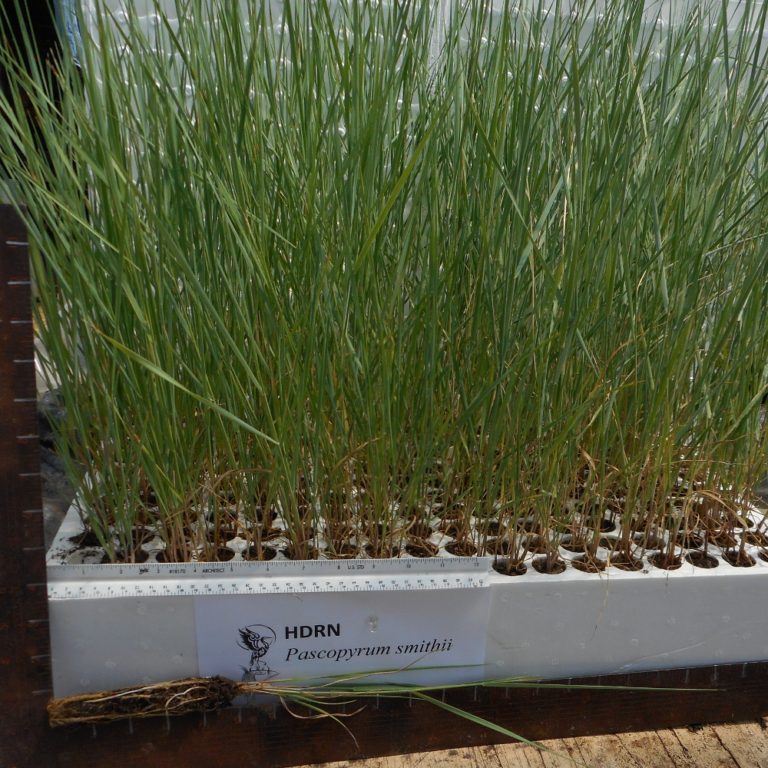Western wheatgrass, Pascopyrum smithii, (Rydb.) A. Love (formerly) is perhaps one of the best known and most common of our native grasses. It is long-lived with an extensive, very strong, rhizomatous root systems combined with a few deep roots…Western wheatgrass is well adapted to stabilization of disturbed soils because of its strong spreading rhizomes. It does not compete well with aggressive introduced grasses during the establishment period, but is very compatible with slower developing natives such as bluebunch wheatgrass (Pseuoroegneria spicata), thickspike wheatgrass (Elymus lanceolatus ssp.lanceolatus), streambank wheatgrass (Elymus lanceolatus ssp. psammophilus), and needlegrass species (Nasella spp., Stipa spp., and Ptilagrostisspp.)… Its relative drought tolerance combined with strong rhizomatous root systems and adaptation to a variety of soils make this species ideal for reclamation in areas receiving 12 to 20 inches annual precipitation. Its low growth form, vigorous sod, and low maintenance requirements make it ideal for ground cover purposes. This grass can be used in urban areas where irrigation water is limited to provide ground cover and to stabilize ditchbanks, dikes, and roadsides.
Pascopyrum smithii – Western wheatgrass, bluestem, bluejoint



